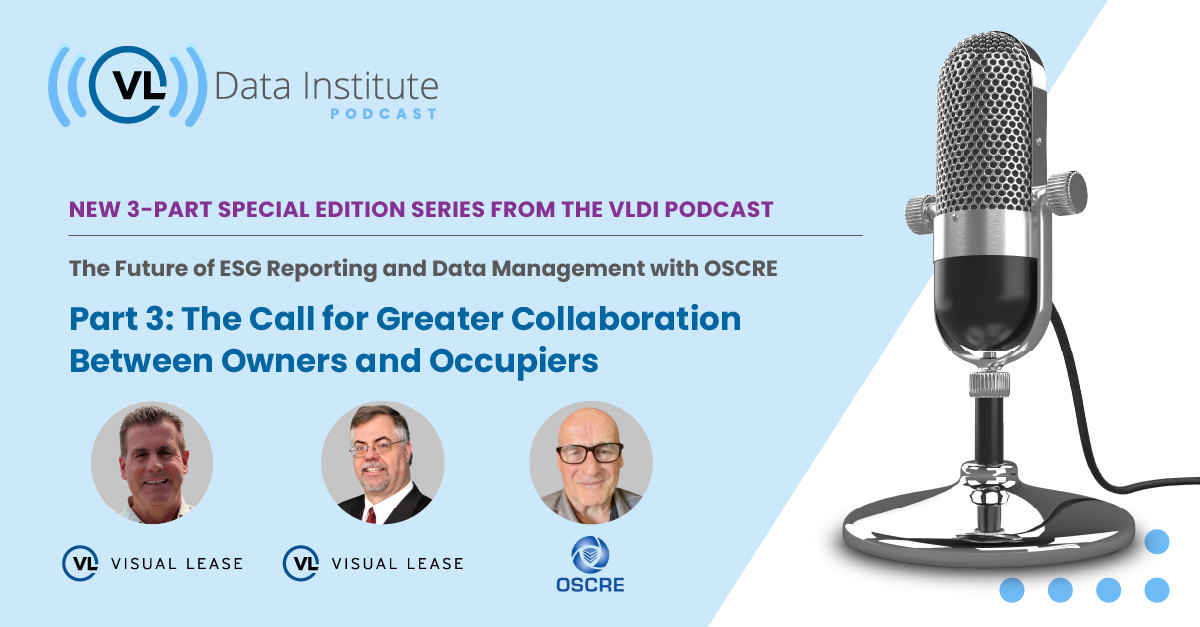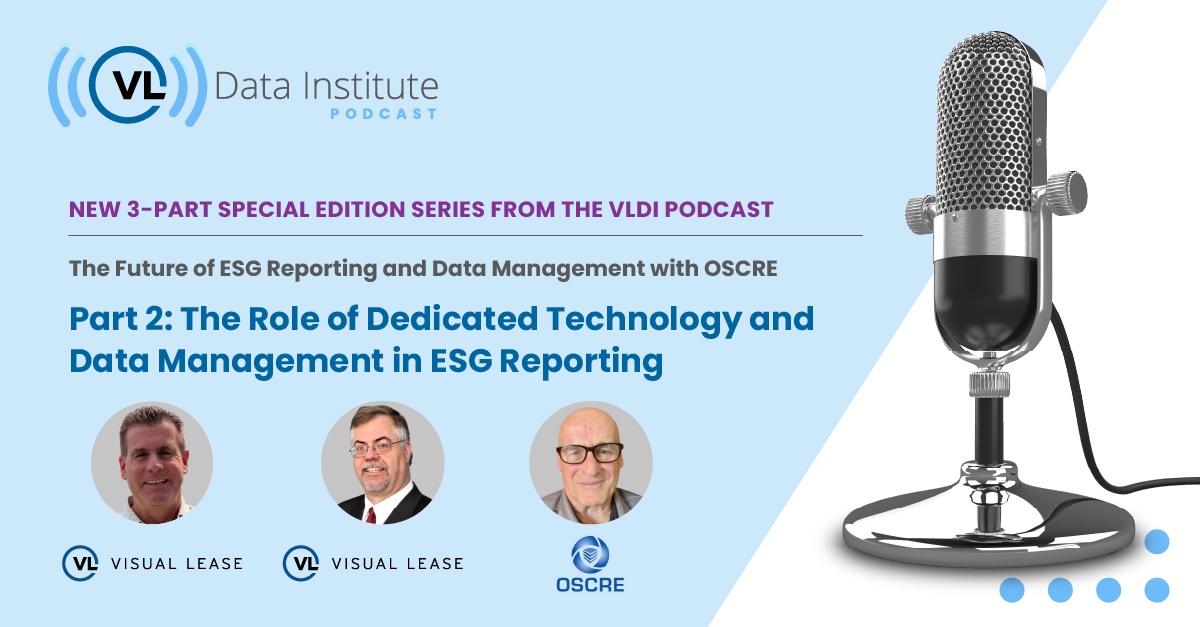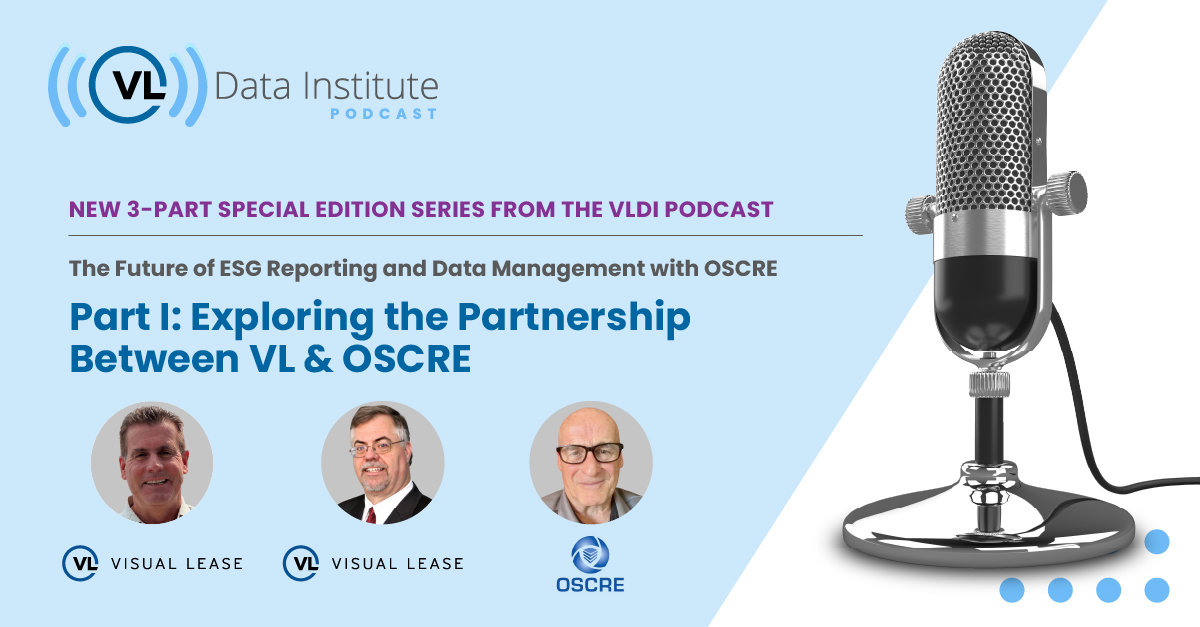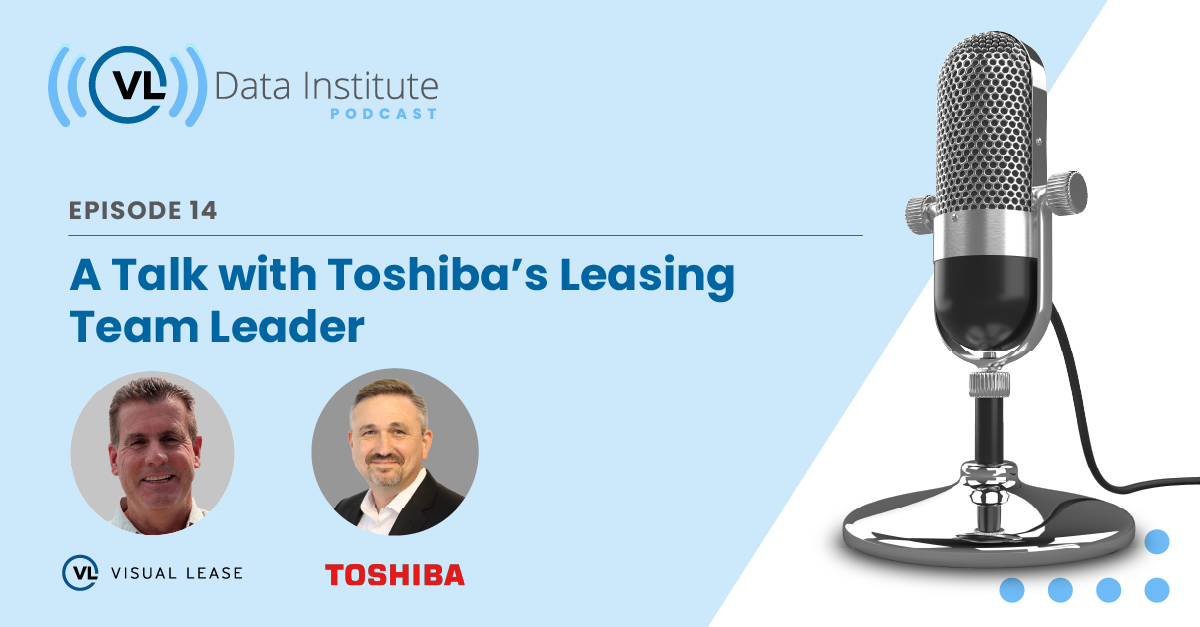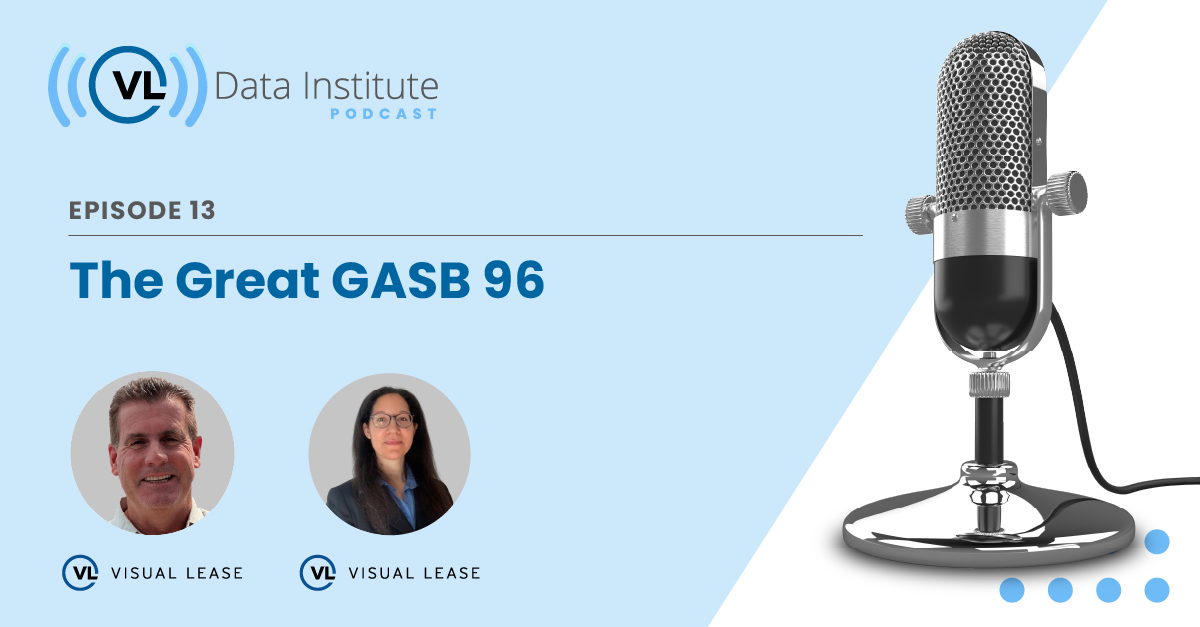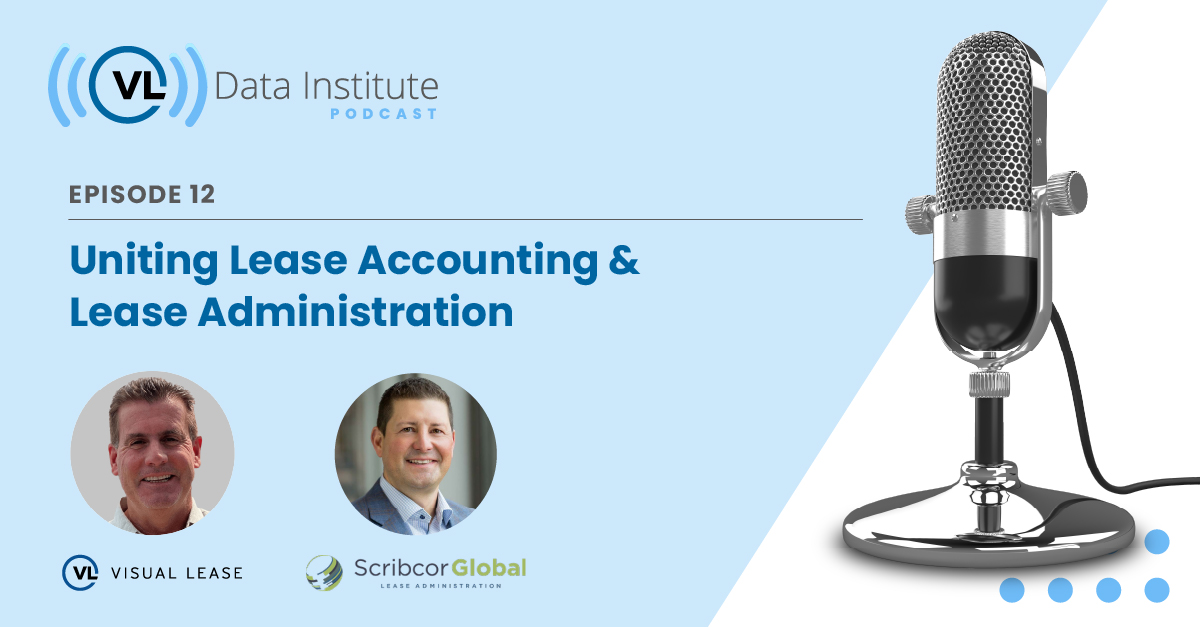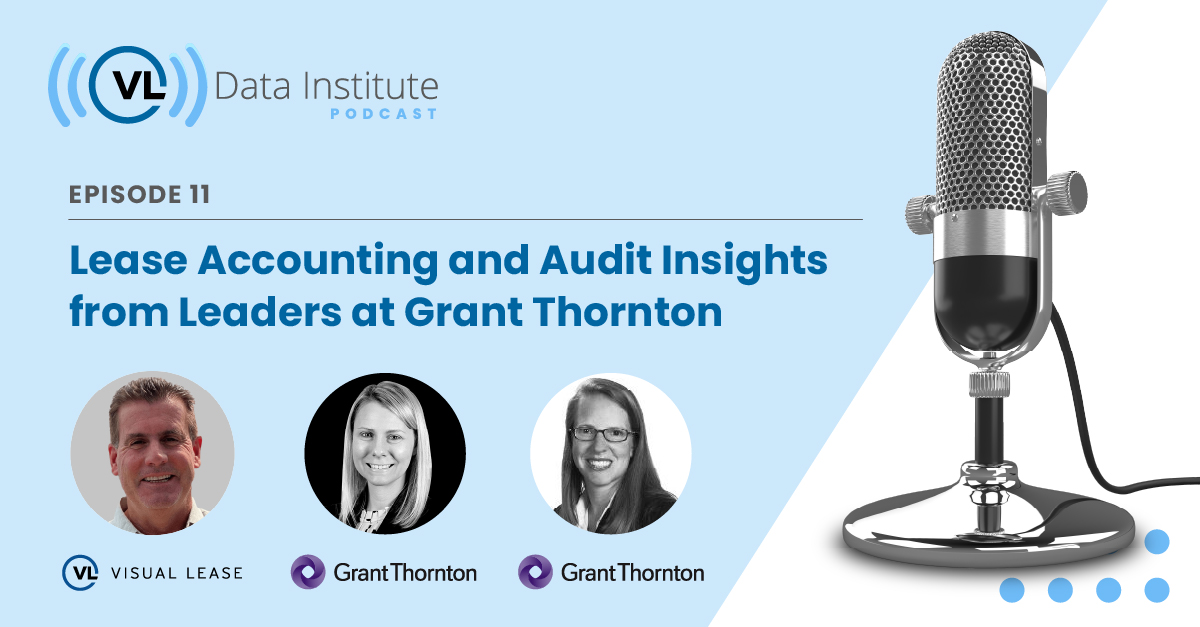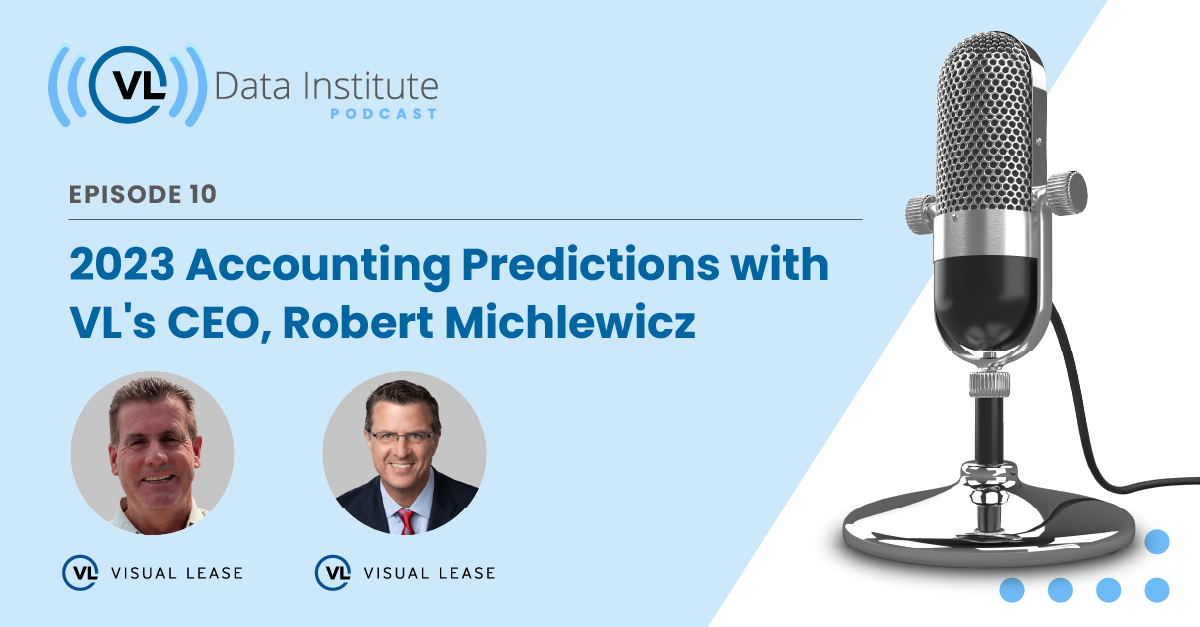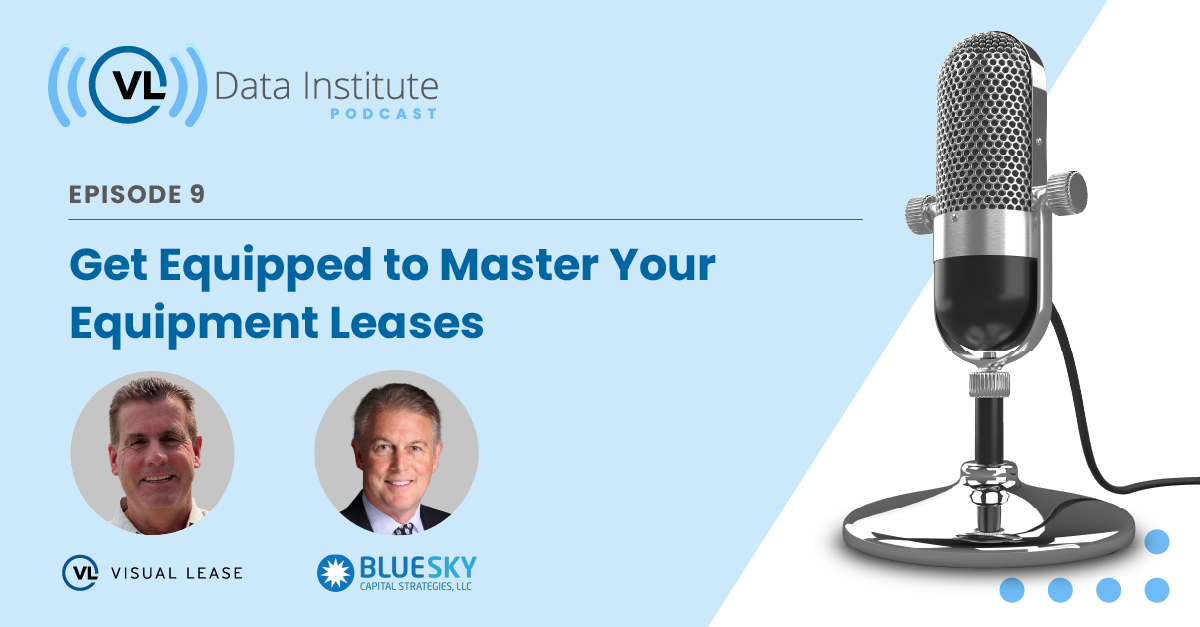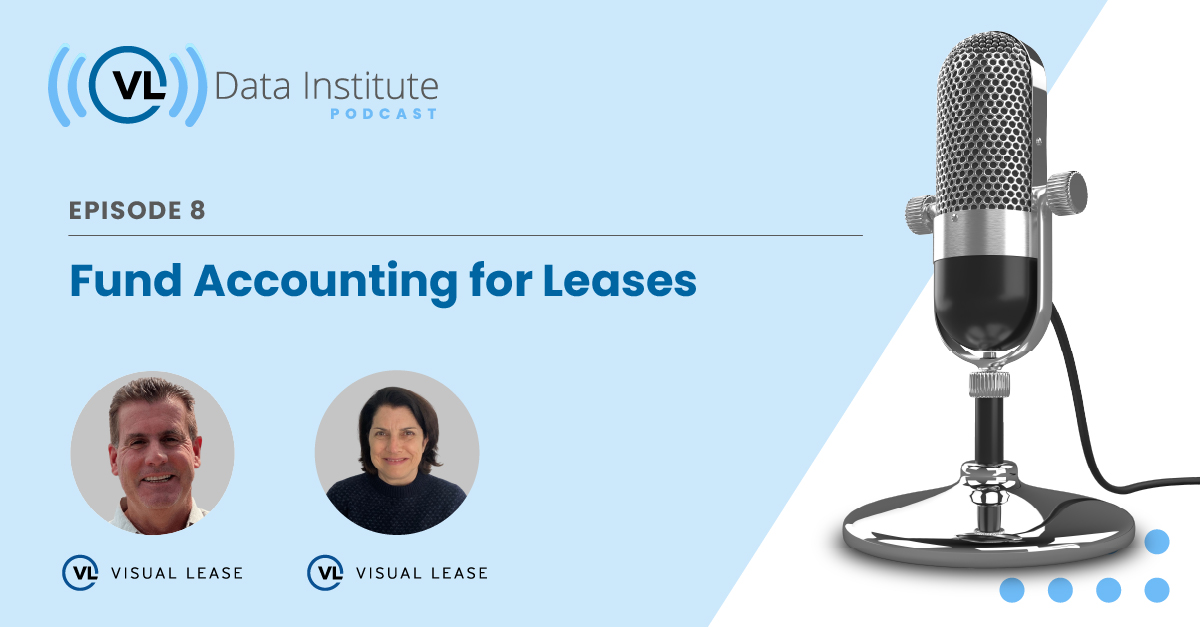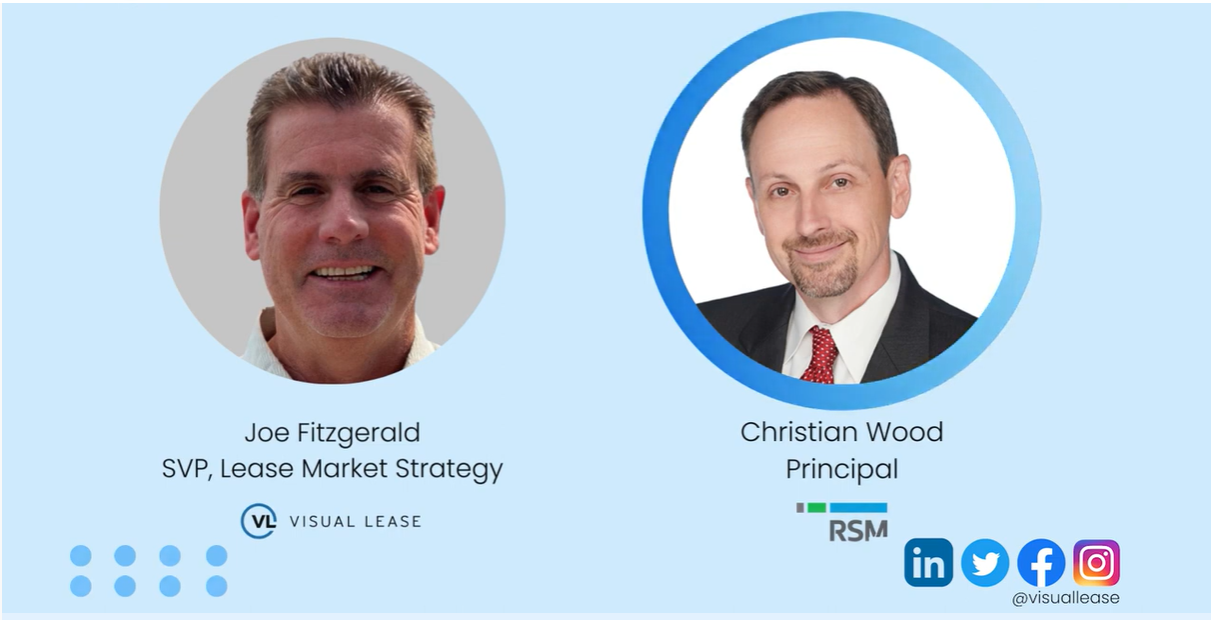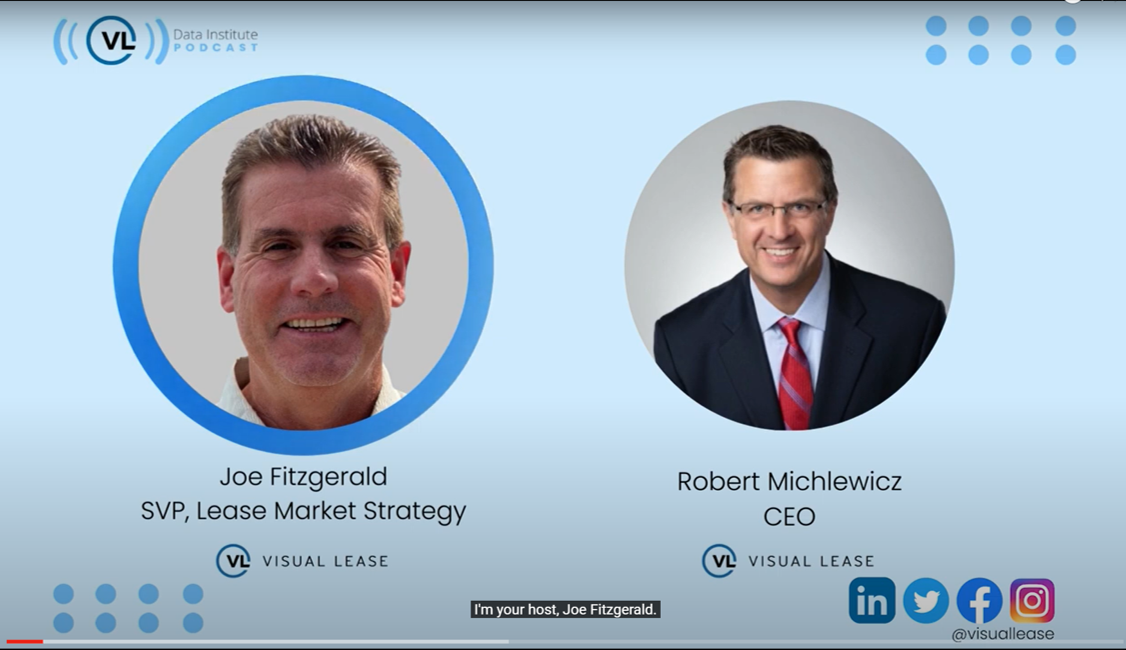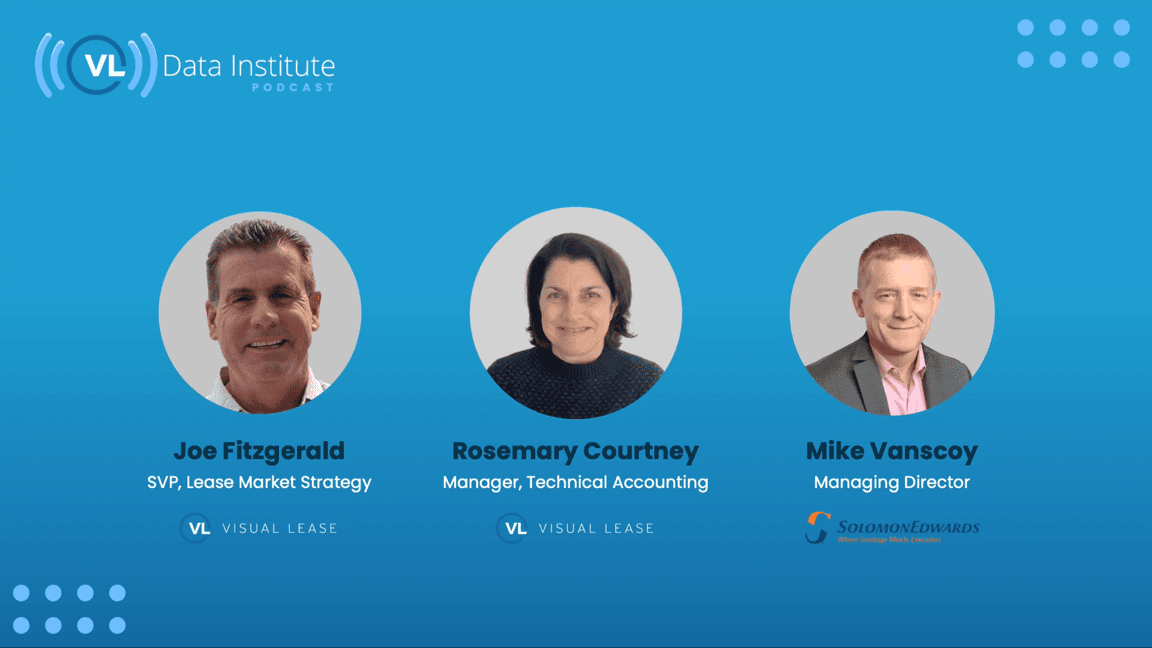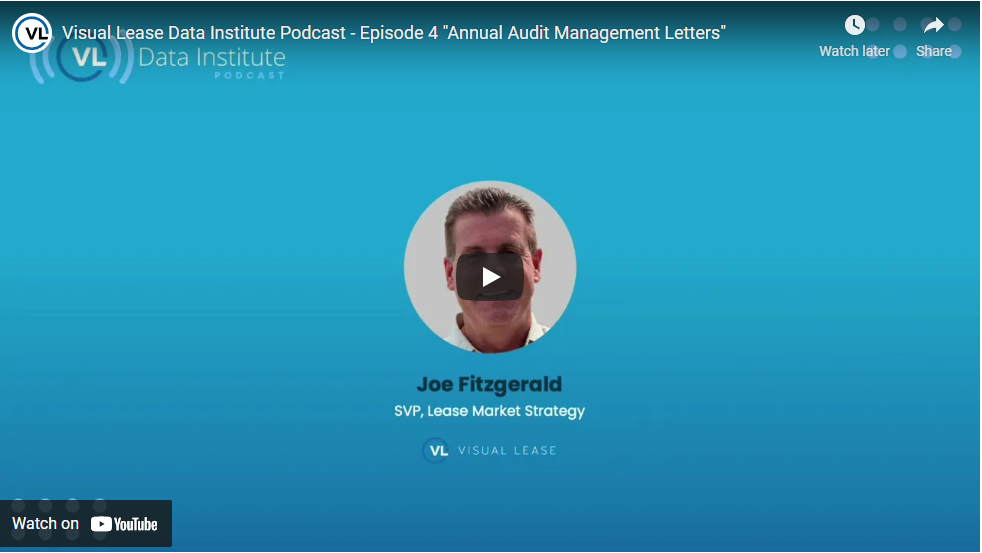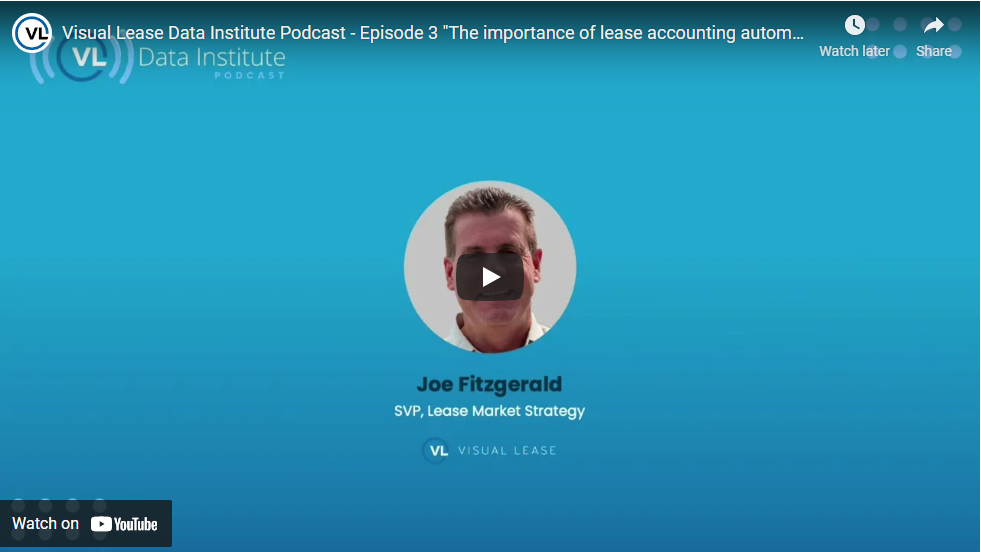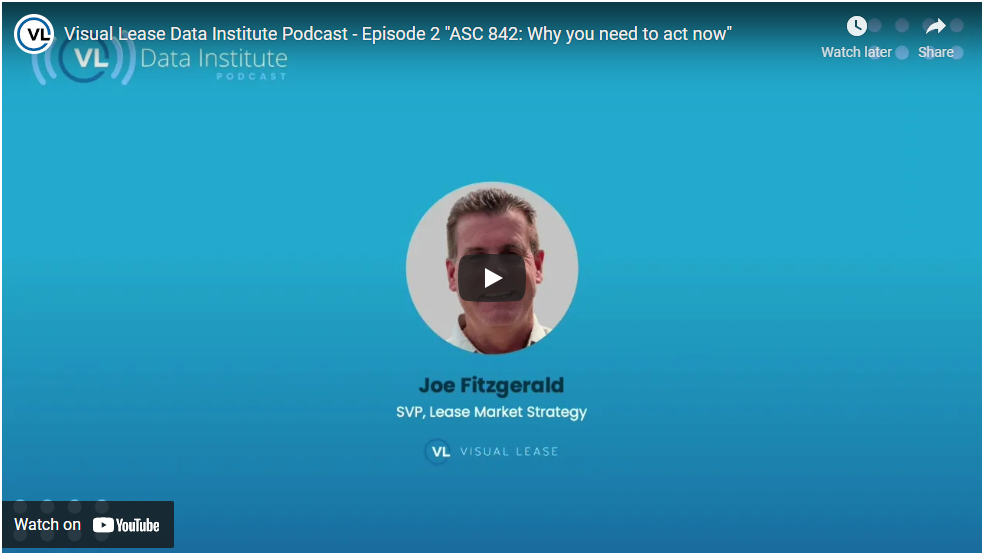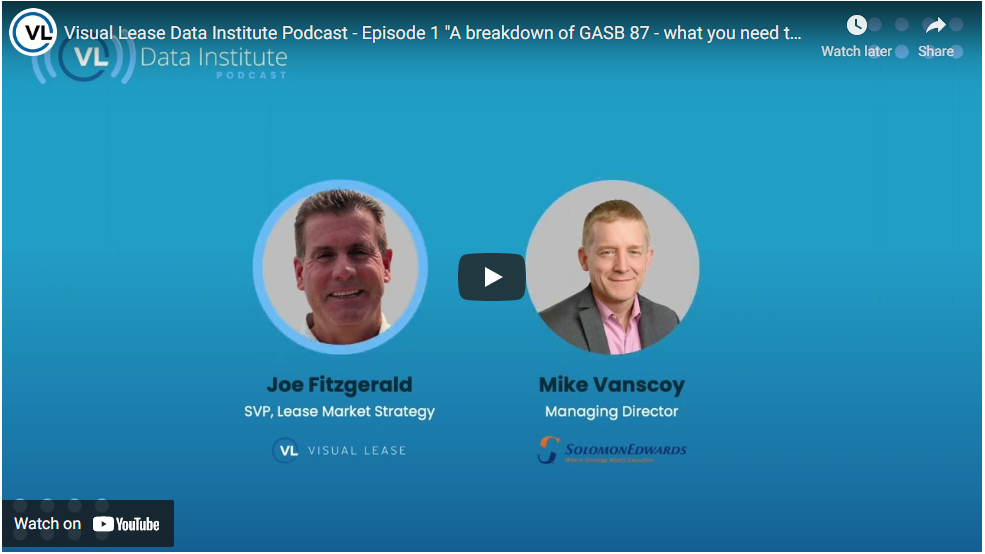In the newest episode of The VLDI Podcast, you’ll gain access to Grant Thornton’s invaluable lease accounting and audit insights. Tune in to hear directly to hear from their in-house experts, Lisa Kaestle, Director of Accounting Advisory Service, and Claire Esten, Partner of Audit Services.
Read Transcript
VLDI Podcast Episode 11 Transcript
Joe:
Hi, I’m your host, Joe Fitzgerald. Welcome back to the Visual Lease Data Institute podcast. Here at VL, we help organizations become compliant with FASB, IFRS and GASB accounting standards while simultaneously improving the financial, legal and operational performance of their leases. Today we have two special guests from one of these Visual Lease’s valued partners Grant Thornton. Please welcome Lisa Kaestle, Director of Accounting Advisory Services and Claire Esten, partner in Audit Services. In 2012, Lisa joined FASB and worked as a project manager on ASC’s implementation project for Topic 842. She currently leads Grant Thornton’s National Leasing Center of Excellence. She has consulted on over 400 ASC 842 adoptions and also joined me in a webinar hosted by VL earlier this year. Clare has over 25 years working with private companies and not for profit organizations serving their audit needs.
She has also assisted many organizations with their lease adoption efforts, overseeing the adoption of the FASB and GASB standard for entities that have between 50 up to 2000 leases. She also leads training for her clients on the lease accounting standards, including sharing best practices and common pitfalls. Hello, Lisa and Claire, thank you both for joining me today.
To get started first, Lisa and then Claire, could you each explain how your service line engages with your clients around lease accounting?
Lisa:
Absolutely. And thanks, Joe, for having us today. Our role within Accounting Advisory services is to really help from a consulting perspective. This will include assisting clients with our adoption process, which can be educating or training our clients on the technical guidance, assisting them with lease extraction and validation procedures, helping them review and identify potential unknown or embedded leases and ultimately documenting their adoption approach in their ongoing policy considerations.
It also includes helping our clients with ongoing lease considerations and technical questions when they arise, whether it’s a complicated modification, a potential impairment, sale leaseback transactions, you name it. We’ve likely seen that and we can be there to help and ensure that the guidance is applied appropriately. Claire, do you want to provide your typical engagement with clients?
Claire:
Thanks, Lisa. And also thank you, Joe, for having us today. So as an auditor, we support our clients with technical accounting guidance, as well as understanding how the gap rules apply to the unique circumstances of their operations to support them as they work through the adoption process. We work with our clients to anticipate how accounting changes might impact their financial statements and how the new requirements might require changes in processes and internal controls as a result of the new accounting rules such as the lease accounting.
We’ll provide training. We provide advice on how to approach the project, and we provide input along the way. Another important element of our support is sharing examples, whether through disclosure examples, lease evaluation templates, among other tools, to assist our clients. And finally, we also bring in our subject matter experts like my friend here, Lisa. When the rules are very complex and there are complex agreements that require expertise in the technical application of those rules.
Joe:
So, Claire, continuing that theme, let’s talk about some reporting challenges companies currently face. From your experience, what are these types of challenges and how can the client work through them?
Claire:
Great question, Joe. I would say completeness and accuracy in two words is how I would describe the challenges that companies face with lease accounting, the adoption process. So with respect to completeness, you want to make sure that your list of leases is a complete list. And often the leasing process can be decentralized and very time consuming, particularly understanding and getting input from multiple departments.
For example, legal. You know, it’s not just an accounting and finance exercise. This involves Legal, I.T., Supply Chain, Procurement, Facilities, the list goes on. You know, in terms of a solution for that, it’s common for organizations to have check ins, whether it’s quarterly, semiannually, etc., and perform accounts payable sweeps to make sure that it’s not just new agreements, but also includes modifications, renewals, terminations that are all being appropriately considered of whether they need to be accounted for as a lease.
You know, when you miss a contract that has a lease contained in it, it’s possible that the financial statements could be materially misstated. So that’s obviously the first area, again, completeness. The second challenge, I would say, relates to accuracy. Every organization is different with the lease contracts that they have. There’s no vanilla. Most companies don’t have consistent agreements and there are nuances, particularly around subjective aspects of the accounting, such as whether to include option periods that are reasonably certain to be exercised.
And that can all result in different accounting conclusions. So I would say the key solution is attention to detail in reading those lease contracts, making sure that you’re picking up the right information, whether you’re looking at payments to see are they monthly, are they annual, are they semiannual? You know, each lease could be different. And then determining what should be included for lease payments versus items that, you know, expenses that may be are period costs.
All that attention to detail is going to be key to making sure that the accounting is accurate.
Joe:
Lisa, in your role as a subject matter expert, I’m sure you stay current on everything that’s happening. What are some of the emerging topics that companies should keep in mind while adopting the lease accounting standard?
Lisa:
Absolutely. And great point. So first, I’d note that the challenges that Claire just discussed, they’re not going to go away post-adoption. Contracts are going to remain complex. They’re going to remain different. It’s not all the same and cannot be treated the same. So I think attention to detail is key. During adoption, it’s also going to be key going forward.
I’m also finding that a lot of companies are so heavily focused on their adoption data that they’re kind of forgetting about how are they going to remain compliant going into the following year. And so 842 it does significantly reduce complexity in many areas. But there’s still going to be subjectivity in judgment and considerations that management’s going to need to think through on an ongoing basis.
And this can include things like determining your lease term and considering renewal options, whether or not you’re reasonably certain. It also can include thinking about tenant improvement allowances in determining who the asset owner is or thinking about modifications. Again, do you treat it as a new separate contract or do you treat it as a modification to the existing contract?
These and many other areas are going to still involve significant judgment and technical considerations to come to the right and appropriate accounting conclusion. So I think while companies need to ensure that they understand what to do during adoption, I want to make sure that they don’t lose sight of some of these nuances and that they continue to educate their team members on how to handle these facts and circumstances and the facts and circumstances that are coming up in their business.
Joe:
Claire, if you think about the audit as the final exam around this adoption, what are some of the common audit requests that you would make of your clients related to their adoption of 842?
Claire:
Good question, Joe. Hopefully it’s not as painful as a final exam, but you know, in the year of adoption, there’s a big lift from an audit standpoint to help ensure that the reporting is again, complete and accurate. And that’s kind of the theme around where we focus our audit procedures, completeness and accuracy. So, we’ll typically look to understand the procedures that the organization perform to ensure that the population is complete.
And this is really an assessment of what’s the internal control, environment and procedures when adopting a new accounting pronouncement, is did they have a good process in place? So looking at what they did to ensure the population is complete would be a start and we would do testing around that population to ensure that it is complete, which is a challenge because you’re looking for things that aren’t there, frankly, when you’re testing for completeness.
We also would need to test that the data within the population of leases that is identified that that data is accurate. So picking a sample of agreements that have been identified as leases under capacity, you know, 842 or GASB 87 going back to the source document testing that again, things like the payment inputs and the term of the lease are all accurately input into the lease calculation on a sample basis.
We generally would expect that our clients would document their adoption approach that covers the considerations in the assumptions made, as well as the process to transition from the old accounting to the new accounting standard. It’s not only an assessment of the the accounting entry itself, but the process under which the company went through to to get to the end point.
We often focus our attention more on the material or significant changes, you know, whether it’s a lease modification that’s significant or a new lease or potentially terminations in leases. So that’s really what we would that would be what we would typically do in the audit as far as audit requests for adoption of 842 or GASB 87.
Joe:
Lisa, I’m curious. Most companies will have adopted. Are there any opportunities you see in 2023 and beyond coming from these accounting changes?
Lisa:
We don’t get asked that question enough, in my opinion. So I do think that there are there are a lot of opportunities that come from adopting 842. The biggest being you have better data. So first I think that that’s going to benefit external stakeholders, for instance, lenders, investors, boards, etc., individuals that are going to use the financial statements.
I think the data that’s being compiled and presented within the financial statements under 842 is undoubtedly an improvement over what was there under 840 for leasing data, right? It’s more accurate, it’s more complete than it’s ever been. And that’s again, because there wasn’t this historical scrutiny on leasing. It didn’t need to be recognized on the balance sheet, it was spread over time.
This change from 842, we’re now seeing that additional scrutiny and we’re seeing companies go through a very detailed adoption process to make sure that they are truly compiling all of these contracts and reflecting their future obligations accurately and completely. So I think that financial data for external reporters will or external stakeholders will certainly be improved. Equally, or perhaps more importantly, I think it’s going to also benefit management, and that’s because they’re going to have greater insights from an operational decision standpoint, again, resulting from this better dat. In addition to all the data that they used to have before,
What we’ve typically seen as clients is to have that in Excel spreadsheets in a very decentralized process. Most of our clients are utilizing software solutions such as Visual Lease, where they can easily go and track, hey, this is where this lease is, this is how much longer we have on it. these are the payments we have, oh yeah, and we have an option to terminate.
And there’s just a lot of data that’s now being centralized in that really allows them to cut costs, potentially to streamline their operations. This could go in the form of rethinking or revisiting your real estate footprint, consolidating amongst many, you know, a high volume number of individual contracts. And for instance, if you have a number of different individually negotiated copier leases or printers, maybe you go back and you get an MSA set up so you can consolidate them and get a better rate.
The increased transparency that the data is bringing, it will really help management better predict future costs, and it’s going to allow them to remain more agile in this kind of ever changing economic environment that we are seeing.
Joe:
You’ve both really packed some great insights into the last 10 minutes. Any closing thoughts, Claire?
Claire:
Sure. I would say ask your auditors for their help. You know, at this point in the effective date time frame, we’ve seen lease accounting adoption over and over many times. Whereas for you, this might be your first time going through it. We’re here to provide assistance and insights so you can get through to the other side, not only compliant with the standard, but hopefully in a better spot in terms of policies and controls over the lease process.
And like Lisa said, you know, better insight into future expenses and other operating factors that you consider when you’re going into a lease transaction. So just ask your auditors for help. I would be remiss if I didn’t mention that we need to maintain our independence so we can’t do the calculations for you. But there’s a lot that your auditors can do to help you get through this process.
Joe:
Lisa, how about from you?
Lisa:
I think that the closing thought I would have is just don’t underestimate leasing, whether it be during the adoption process, which can be extensive or kind of the ongoing technical considerations. Again, this historically under 840 was one of the most highly consulted areas of gap. I don’t think that’s going to change just because 842 came in.
It increases the level of scrutiny. And so, I continue to think that this is going to be an area where, as Claire pointed out, it’s okay to say, I need some help, I have some questions. We’re here to help and we’ve seen it with a number of different clients. So, you know, we’re happy to always take those calls and try to help as best as we possibly can.
Joe:
That will conclude today’s episode of the Visual Lease Data Institute podcast. Lisa, Claire, thank you so much for being here and sharing your wealth of knowledge in advisory and audit with us. If you enjoyed this episode and want to catch up with all things VLDI, be sure to follow our LinkedIn, Twitter, Instagram and Facebook pages @visuallease.
And don’t forget to tune in to the next episode of the Visual Lease Data Institute podcast, where our focus is on helping you leverage your lease portfolio as a strategic asset.











